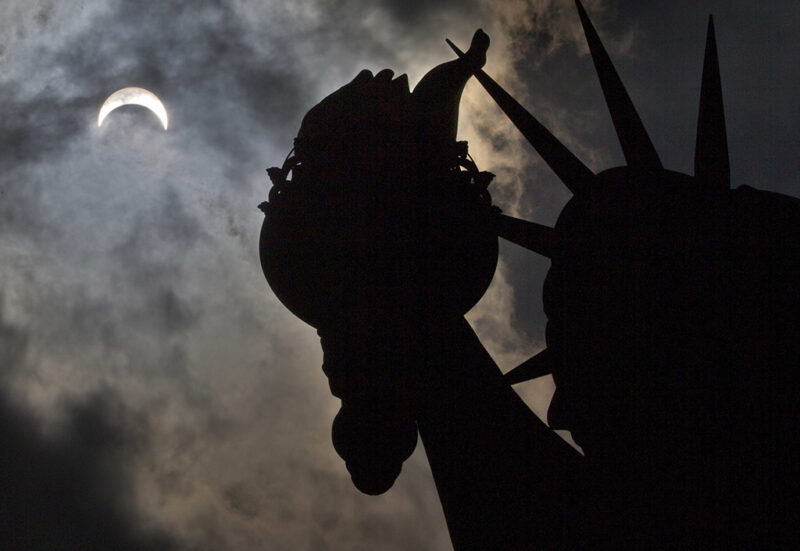The eclipse hub on APNews attracted the most ever visits to a hub in a single day.
By the time the moon began to block the sun for millions of Americans on August 21, Marcia Dunn, Seth Borenstein, Gillian Flaccus, Marshall Ritzel and many others across the AP had told the world just about everything there was to know about the event with a series of text stories, photos, videos and animations organized and coordinated by Stephanie Nano and Raghu Vadarevu. Stories included what scientists were hoping to learn, what ancient peoples thought of eclipses, how to protect your eyes, how eclipses work, how businesses were taking advantage of the big day, and more.

A partial solar eclipse appears over the Statue of Liberty on Liberty Island in New York, Aug. 21, 2017.
AP Photo / Seth Wenig
On the day of the event, as anticipation mounted, the coast-to-coast coverage plan put in place by Nano, Vadarevu, photo editor Chris Carlson and the BNC spun up, starting with Flaccus contributing text and video from the West. Many text, photo and video colleagues along the path of the eclipse contributed throughout the day. Borenstein and Kristin Hall were posted up in a zoo in Nashville contributing text and video. And Dunn, writing from Cape Canaveral, captured the excitement and wonder, writing the main bar using feeds from all over.
The coverage brought the eclipse to life for those who couldn’t witness it and helped those who could see it understand and enjoy it even more. Readers responded: The Total Eclipse 2017 hub on APNews, organized and promoted by Alicia Chang and Dave Clark, attracted the most ever visits to a hub in a single day.
For leading the effort on a sparkling package that made full use of the AP’s national reach and expertise in all formats to explore a story of enormous national interest, this week’s $300 Best of the States prize is shared by Dunn, Borenstein, Flaccus and Ritzel.
